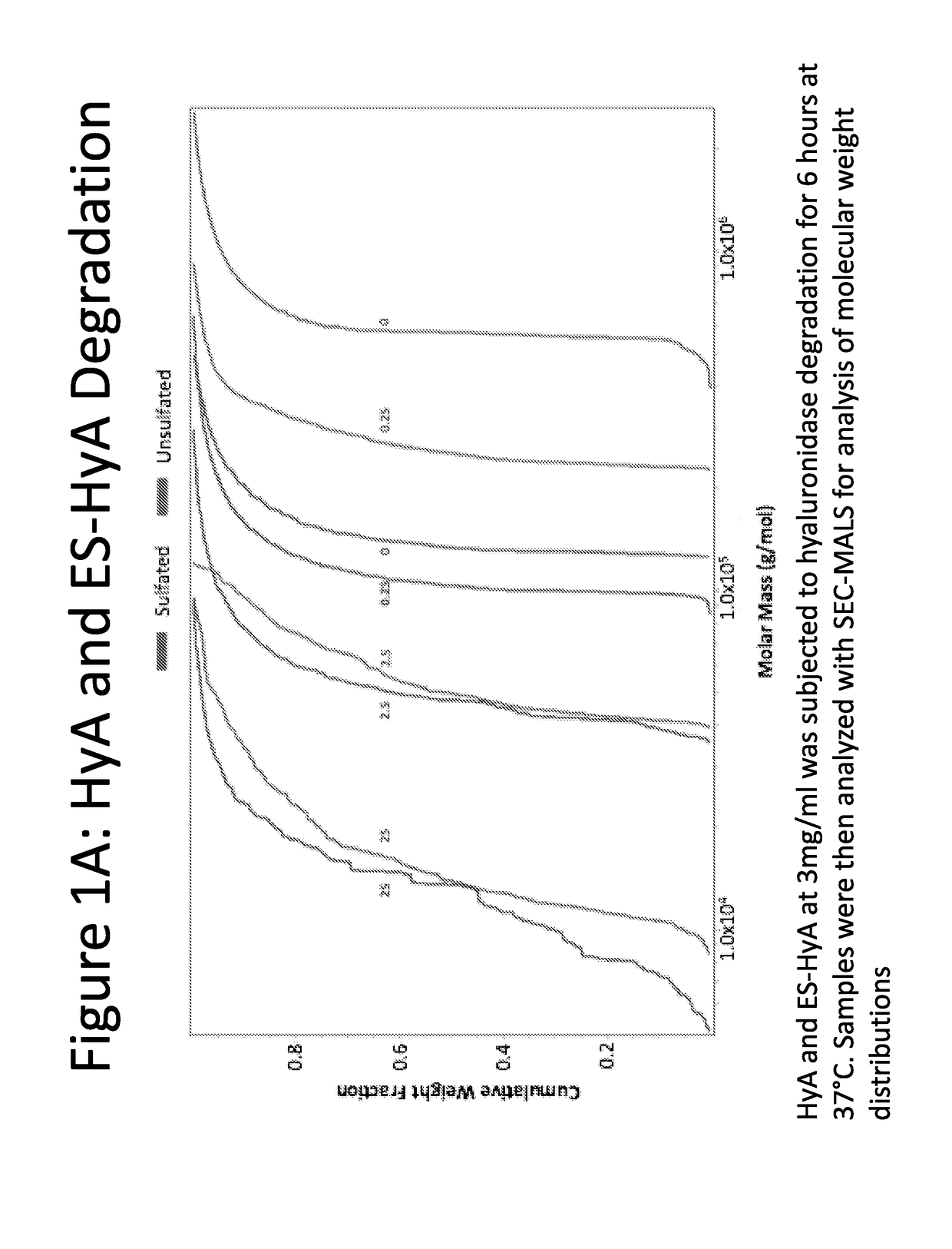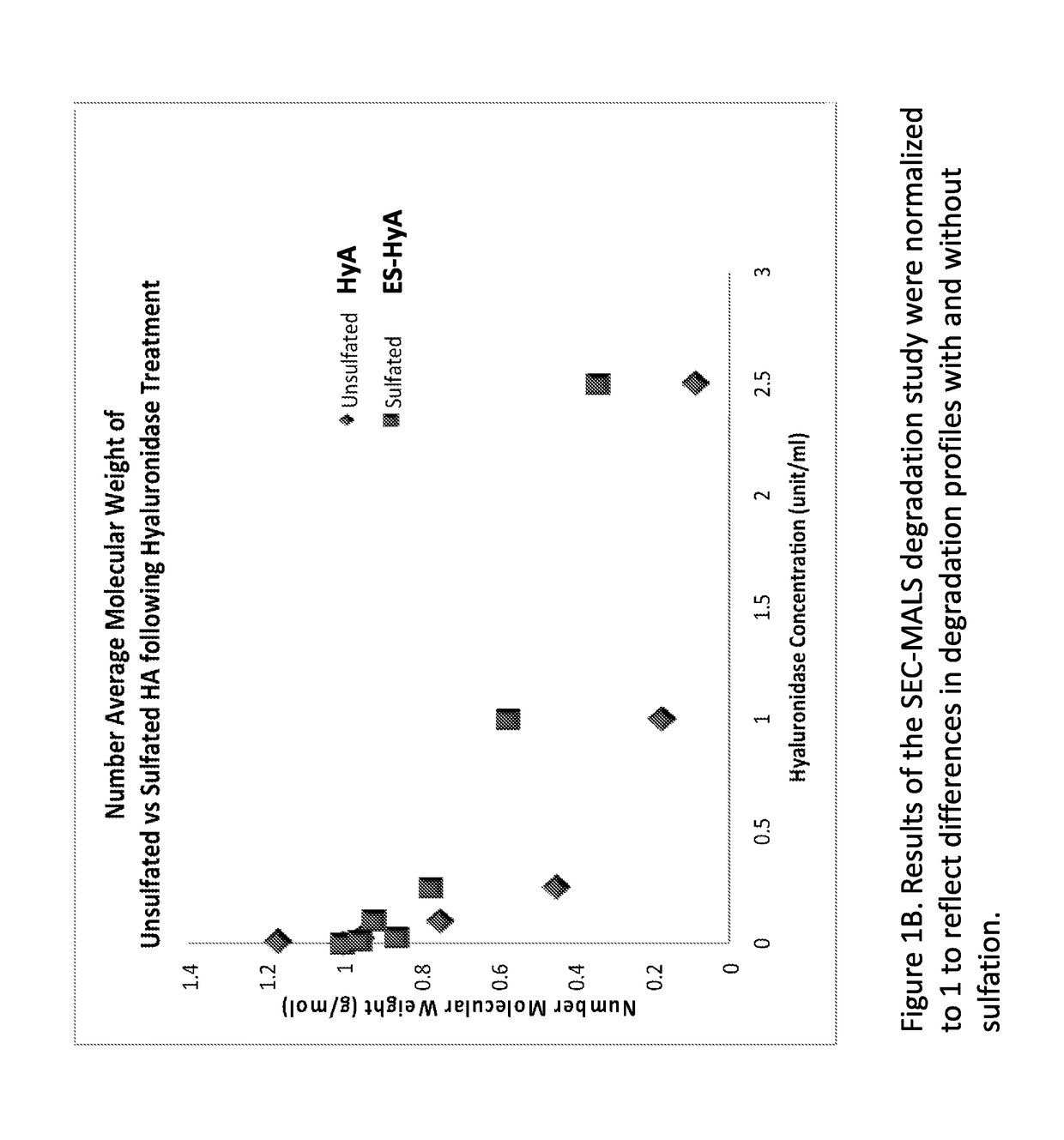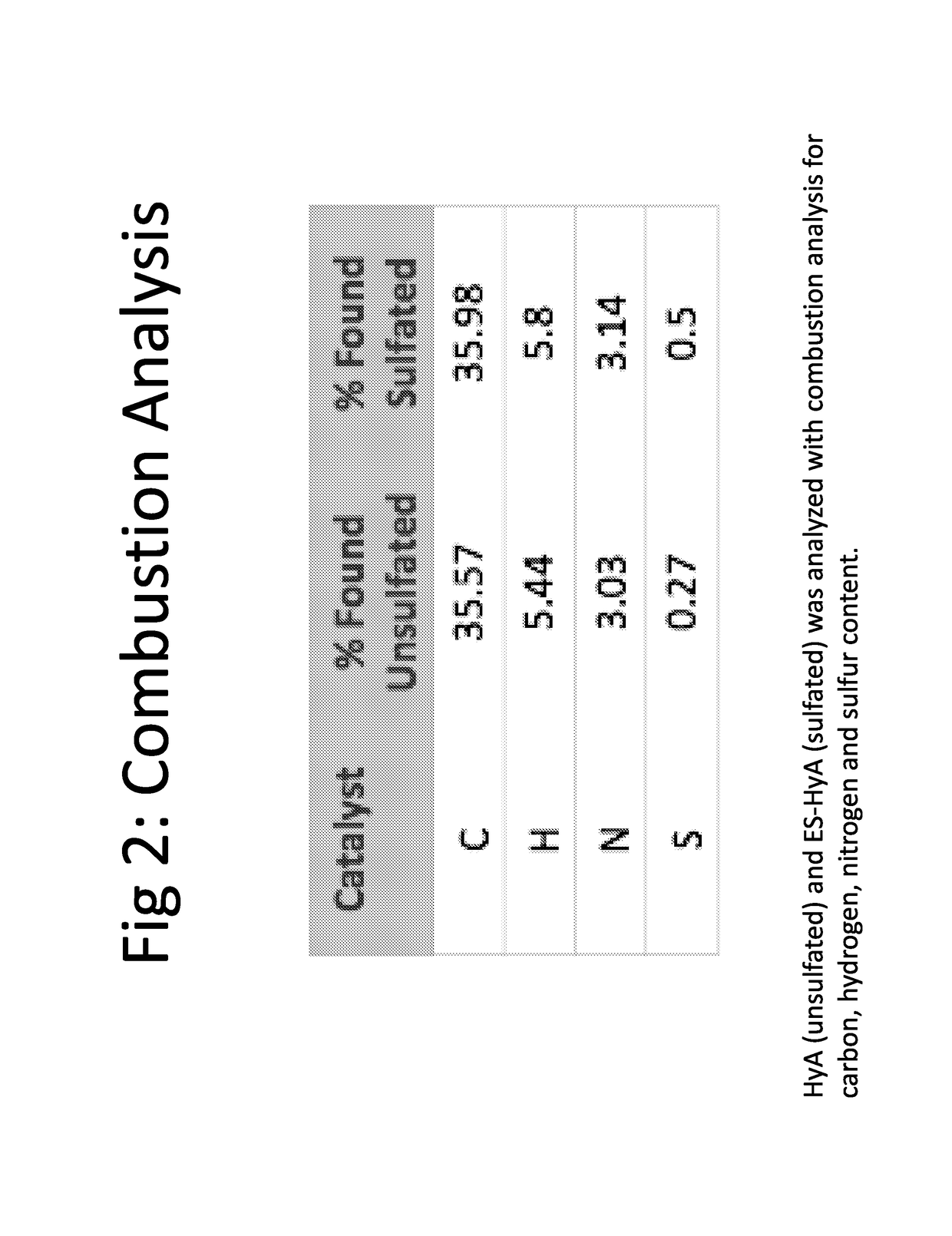Ethylsulfonated hyaluronic acid biopolymers and methods of use thereof
a technology of hyaluronic acid and biopolymer, which is applied in the direction of biochemistry apparatus and processes, unknown materials, and capsule delivery, etc., can solve the problems of limited use of hya in medical applications, limited potential use of sulfated gag biopolymers, and limited current use of hya
- Summary
- Abstract
- Description
- Claims
- Application Information
AI Technical Summary
Benefits of technology
Problems solved by technology
Method used
Image
Examples
example 1
on of Hyaluronic Acid
[0135]ES-HyA was synthesized using via conjugation of the aminoethylsulfonate to the HyA backbone. The ability of ES-HyA to resist enzymatic degradation relative to HyA was evaluated by incubating ES-HyA and HyA with hyaluronidase at various concentrations for 2.5 hours (FIG. 1). The cumulative molecular weight distribution was evaluated at various time points during the experimental interval using size exclusion chromatography with multi-angle light scattering analysis (SEC-MALS). It was found that the ES-HyA was able to resist the activity of the glycolytic enzyme, exhibited by molecular weights that were 2-3 times greater than the HyA at physiologically relavant concentrations of hyaluronidase (0.25-2.5 units / mL). At these concentrations, the half-life of ES-HyA appeared to be in the range of 6.6-26.9 hrs, whereas the half-life of HyA was in the range of 2.35-7.5. Thus the method of sulfonation increased the half-life of the biopolymer by approximately 3× on ...
example 2
of Sulfated Hyaluronic Acid
[0138]Sulfated hyaluronic acid was synthesized by a two-step process. First, aldehyde derivative of hyaluronic acid (HyAALD) was synthesized by sodium periodate oxidation of hyaluronic acid (HyA). HyA of 1 million Daltons was incubated with sodium periodate (NaIO4) in the dark at room temperature to convert the vicinal diols to adjacent aldehydes to produce HyAALD (FIG. 4A). Second, sulfated hyaluronic acid (SHyA) was synthesized by conjugation of 2-aminoethyl hydrogen sulfate to HyAALD and subsequent reduction using sodium cynoborohydride. HyAALD produced in the first reaction step was combined with 2-aminoethyl hydrogen sulfate (NHCH2CH2—SO4−) and the reaction product was incubated with sodium cynoborohydride (NaBH3CN) at room temperature to produce SHyA (FIG. 4B).
[0139]Validation of sulfation of hyaluronic acid was performed by NMR analysis. Proton-(1H)-NMR spectra were produced and compared for HyAALD and SHyA to demonstrate the disappearance of aldehy...
example 3
[0145]The viability, proliferation, and adhesion of cardiac progenitor cells (CPC) was assessed in sulfated hyaluronic acid (SHyA) with varied degrees of sulfation. Degree of sulfation was varied by varying the moles of 2-aminoethyl hydrogen sulfate reacted with HyAALD (25, 50, or 100 moles of 2-aminoethyl hydrogen sulfate). Cells encapsulated in sulfated HyA hydrogels demonstrated high viability after one day in culture, as assessed by double staining with calcein (green, live cells) and propidium iodide (red, dead cells) (FIG. 11, top panels). CPCs were capable of adhering and spreading within the sulfated hydrogel networks containing the adhesive ligand bspRGD(15), as assessed by double staining for f-actin stress fibers (TRITC-phalloidin, red) and nuclei (DAPI, blue) (FIG. 11, bottom panels).
[0146]CPC differentiation was also assessed in sulfated hyaluronic acid (SHyA) with varied degrees of sulfation. CPCs encapsulated in sulfated hydrogels containing bs...
PUM
| Property | Measurement | Unit |
|---|---|---|
| molecular weight | aaaaa | aaaaa |
| molecular weight | aaaaa | aaaaa |
| molecular weight | aaaaa | aaaaa |
Abstract
Description
Claims
Application Information
 Login to View More
Login to View More - R&D
- Intellectual Property
- Life Sciences
- Materials
- Tech Scout
- Unparalleled Data Quality
- Higher Quality Content
- 60% Fewer Hallucinations
Browse by: Latest US Patents, China's latest patents, Technical Efficacy Thesaurus, Application Domain, Technology Topic, Popular Technical Reports.
© 2025 PatSnap. All rights reserved.Legal|Privacy policy|Modern Slavery Act Transparency Statement|Sitemap|About US| Contact US: help@patsnap.com



